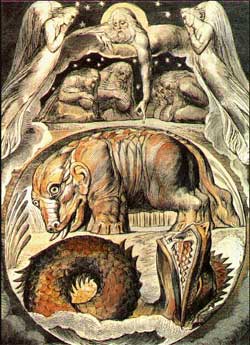
Behemoth, a spirit of the desert, possibly derives from the Egyptian for “water buffalo” or from the Egyptian deity, Taueret, about whom the Greek historian, Herodotus, wrote. The term “Behemoth” in the Hebrew is the plural form of the very common “behemah” referring to a beast of use to humans or a dumb animal. It is being used here, however, as a single entity.
In the Old Testament, the earliest description is in the Book of Job, which describes Behemoth as follows:
‘Behold Behemoth,
which I made as I made you;
he eats grass like an ox.
Behold, his strength is in his loins,
and his power in the muscles of his belly.
He makes his tail stiff like a cedar;
the sinews of his thighs are knit together.
His bones are tubes of bronze,
his limbs like bars of iron.
He is the first of the works of God;
let him who made him bring near his sword!
For the mountains yield food for him
where all the wild beast play.
Under the lotus plant he lies,
in the covert of the reeds and in the marsh.
For his shade the lotus tree covers him
the willows of the brook surround him.
Behold, if the river is turbulent he is not frightened;
he is confident though Jordan rushes against his mough.
Can one take him with hooks,
or pierce his nose with a snare?’
-Job 40:15-24
Behemoth in Extra-Biblical Literature
1 (Ethiopic Apocalypse of) Enoch (dated second century BCE – first century CE) gives the following description of this demon’s origins:
‘And that day will two monsters be parted, one monster, a female named Leviathan in order to dwell in the abyss of the ocean over the fountains of water; and (the other), a male called Behemoth, which holds his chest in an invisible desert whose name is Dundayin, east of the garden of Eden.’ – 1 Enoch 60:7-8
Also 4Edras 6:47-52 (dated late 1st century CE) states that on the fifth day, after God had commanded the water to create living creatures:
“Then you kept in existence two living creatures; the name of one you called Behemoth and the name of the other Leviathan. And you separated one from the other, for the seventh part where the water had been gathered together could not hold them both. And you gave Behemoth one of the parts which had been dried up on the third day, to live in it, where there are a thousand mountains; but to Leviathan you have the seventh part, the watery part; and you have kept them to be eaten by whom you wish, and when you wish” – 4Edras 6:49-52
Behemoth in Paradise Lost
John Milton writes about the birth of Behemoth in his epic, Paradise Lost living creatures, both good and evil:
Each in their kind. The Earth obeyed, and straight
Opening her fertile womb teemed at a birth
Innumerous living creatures, perfect forms,
Limbed and full grown: Out of the ground up rose,
As from his lair, the wild beast where he wons
In forest wild, in thicket, brake, or den;
Among the trees in pairs they rose, they walked:
The cattle in the fields and meadows green:
Those rare and solitary, these in flocks
Pasturing at once, and in broad herds upsprung.
The grassy clods now calved; now half appeared
The tawny lion, pawing to get free
His hinder parts, then springs as broke from bonds,
And rampant shakes his brinded mane; the ounce,
The libbard, and the tiger, as the mole
Rising, the crumbled earth above them threw
In hillocks: The swift stag from under ground
Bore up his branching head: Scarce from his mould
Behemoth biggest born of earth upheaved
His vastness: Fleeced the flocks and bleating rose,
As plants: Ambiguous between sea and land
The river-horse, and scaly crocodile.
– Paradise Lost – Book VII 453-474
Dictionnaire Infernal – Collin de Plancy (1863) (paraphrased)
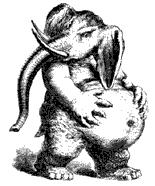
Behemoth rules over the domain of gluttony, and is said to be butler and high cupbearer of hell. Bodin thought he was the Egyptian Pharaoh who persecuted the Israelites. There are disagreements about his appearance throughout commentaries. Some say he appears as a whale or elephant. Others believe he is a species that no longer exists. Urbain Brandier wrote that he was definitely a demon, whereas Delancre sees him as a monstrous animal, who can disguise himself as a dog, elephant, fox, or wolf. The Book of Job describes him as a monstrous creature. Behemoth is not listed in Wierus’ hierarchy of demons, though Wierus does admit that Behemoth could be Satan himself.
It is also said that in reference to Chap 40 of Job, that rabbis make him a great roast on the festival of their Messiah because he can eat as much hay as beef. They make the roast large enough so that Behemoth must gobble up the hay of a thousand mountains a day, which he has eaten since the beginning of the world. He never leaves these mountains, for if he did, time would be disrupted. The rabbis also claim that God killed the female of the species so that they could never reproduce.
Reference
- Book: Paradise Lost
- Book: Dictionary of Angels Including the Fallen Ones
- Book: The Goetia the Lesser Key of Solomon the King
- Book: The Devil: Perceptions of Evil from Antiquity to Primitive Christianity
- Book: Fallen Angels – The Soldiers of Satan’s Realm by Bernard Bamberger. ISBN: 156619850X (c) 1952
- Book: Satan, a Portrait by Edward Langton. ISBN: 0848215621 (c) 1977

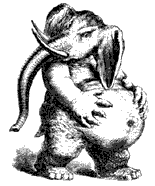
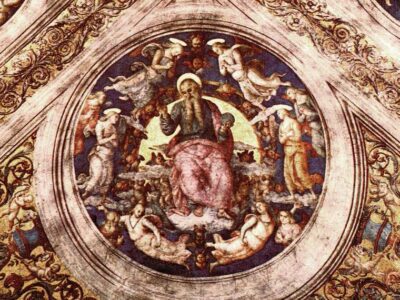
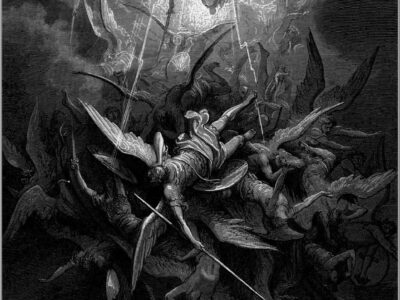
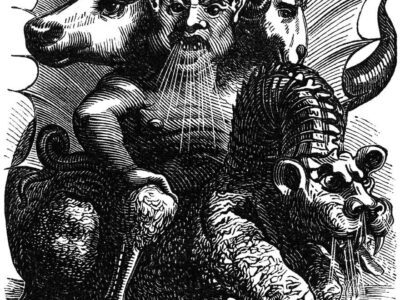
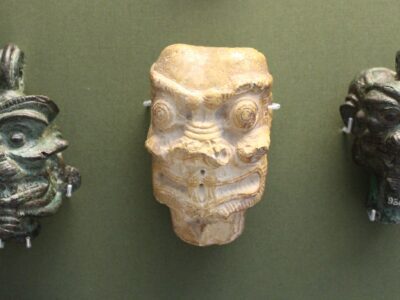
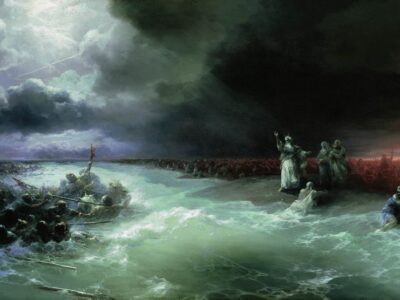
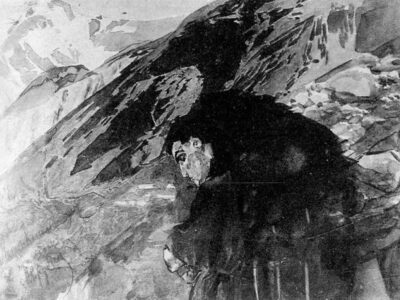
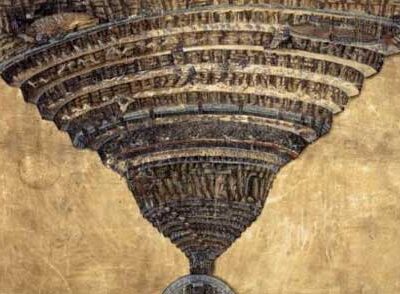
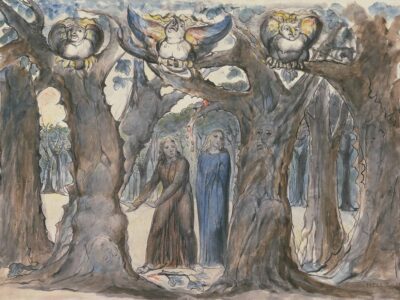
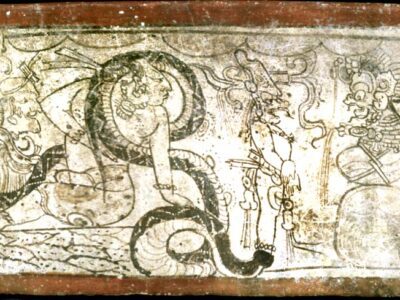
 Beelzebub
Beelzebub